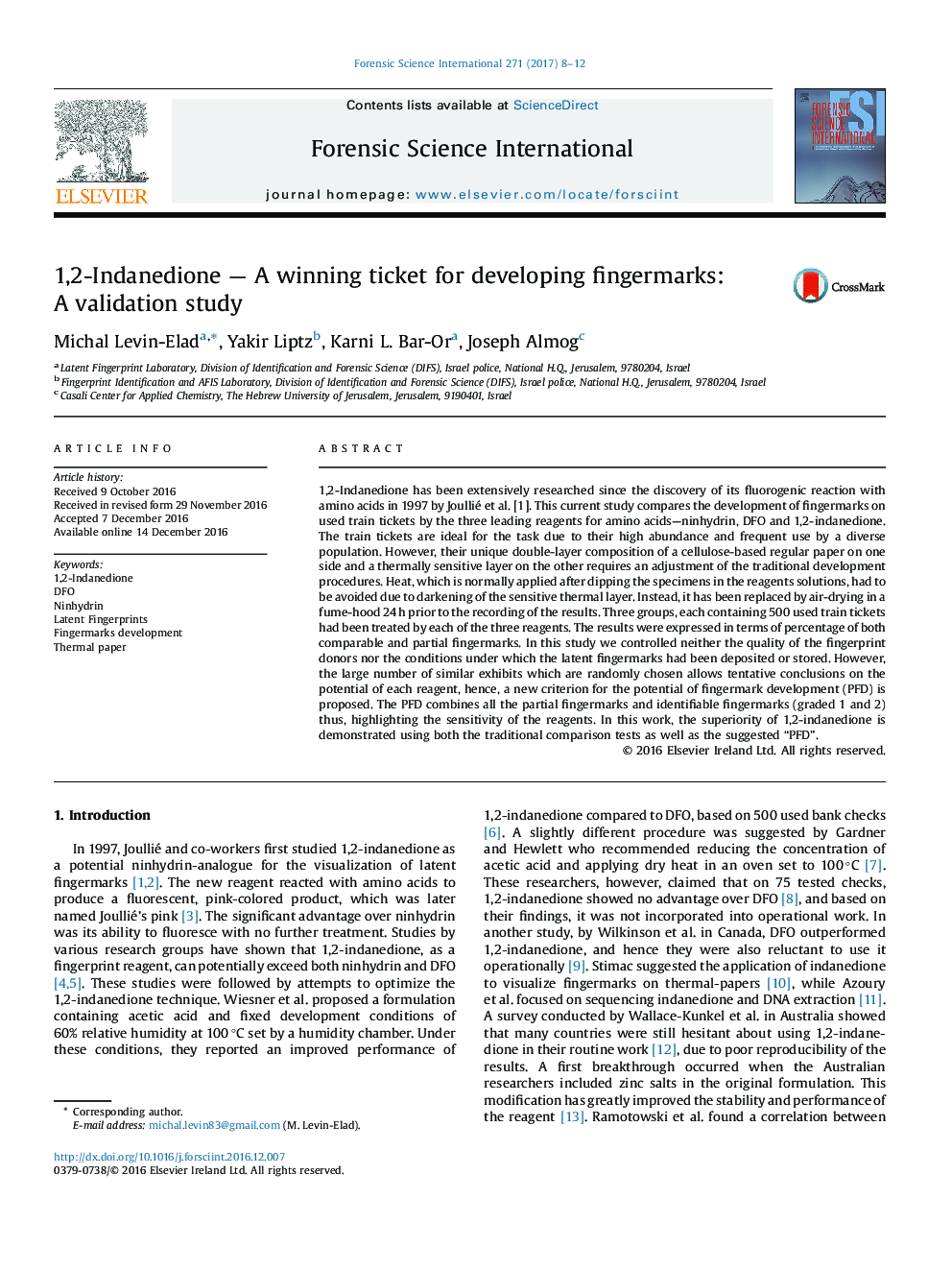| Article ID | Journal | Published Year | Pages | File Type |
|---|---|---|---|---|
| 6462036 | Forensic Science International | 2017 | 5 Pages |
â¢1500 used train tickets developed by the three leading reagents for amino acids.â¢A unique composition requires an adjustment of the traditional development procedures.â¢A new criterion for the potential of fingermark development (PFD) is proposed.â¢The PFD combines all the partial fingermarks highlighting the sensitivity of the reagents.â¢The superiority of 1,2-indandeione is demonstrated by both PFD and traditional assessments.
1,2-Indanedione has been extensively researched since the discovery of its fluorogenic reaction with amino acids in 1997 by Joullié et al. [1]. This current study compares the development of fingermarks on used train tickets by the three leading reagents for amino acids-ninhydrin, DFO and 1,2-indanedione. The train tickets are ideal for the task due to their high abundance and frequent use by a diverse population. However, their unique double-layer composition of a cellulose-based regular paper on one side and a thermally sensitive layer on the other requires an adjustment of the traditional development procedures. Heat, which is normally applied after dipping the specimens in the reagents solutions, had to be avoided due to darkening of the sensitive thermal layer. Instead, it has been replaced by air-drying in a fume-hood 24Â h prior to the recording of the results. Three groups, each containing 500 used train tickets had been treated by each of the three reagents. The results were expressed in terms of percentage of both comparable and partial fingermarks. In this study we controlled neither the quality of the fingerprint donors nor the conditions under which the latent fingermarks had been deposited or stored. However, the large number of similar exhibits which are randomly chosen allows tentative conclusions on the potential of each reagent, hence, a new criterion for the potential of fingermark development (PFD) is proposed. The PFD combines all the partial fingermarks and identifiable fingermarks (graded 1 and 2) thus, highlighting the sensitivity of the reagents. In this work, the superiority of 1,2-indanedione is demonstrated using both the traditional comparison tests as well as the suggested “PFD”.
